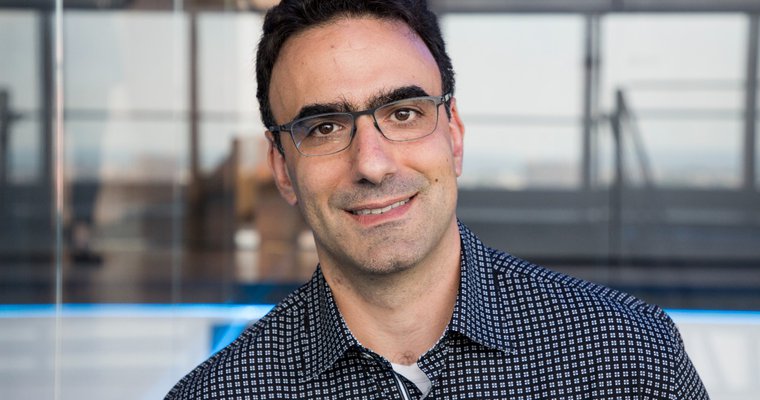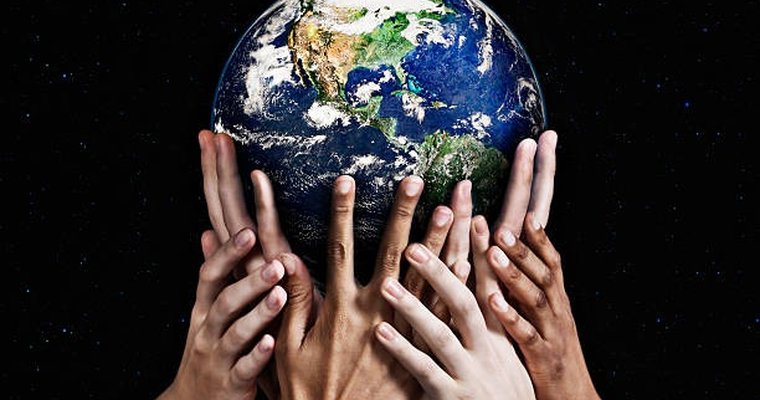The effects of climate change continue to be under the microscope with companies shifting their priorities to take an eco-friendlier approach. Intersection CEO Chris Grosso talked about how effective OOH advertising can promote companies but also get people thinking about cutting carbon emissions and ways to battle climate change.
As Earth Month comes to a close and the effects of climate change continue to be under the microscope, companies are constantly shifting their priorities to take an eco-friendlier approach.
In turn, climate-conscious consumers are looking for products that are healthier for the environment. For businesses to reach them with important messaging, especially consumers on the go, companies are seeing the advantages of out-of-home advertising.
 |
| Chris Grosso, provided |
What is one of the leading modes of transportation cutting carbon emissions? Public transit. Many urban bus systems run on renewable energy. And, another person riding a bus or train is one less driver on the road. Businesses have caught wind of this and are splashing OOH promotions for eco-friendly brands on the side of city busses, subways and trains.
Intersection, an OOH media and technology company, has helped companies promote their products through public transit since 2019. The company has worked with major cities such as Portland, Seattle, Philadelphia and others to get eco-friendly promotions on city transit systems.
Chris Grosso, CEO of Intersection, said his company works to make urban living easier by helping cities communicate with their residents to increase mass transit usage, which helps increase revenue for additional bus shelters.
In an email interview with Digital Signage Today, Grosso talked about how effective OOH advertising can promote companies but also get people thinking about cutting carbon emissions and ways to battle climate change.
Q: Intersection does a lot of OOH advertising on mass transit. When did the company start marketing to mass transit companies? Why?
A: Intersection is an experience-based OOH media and technology company. We deliver consumer amenities, content, and data-driven advertising to large cities. Oftentimes, we partner with cities and transit authorities to deliver a consumer amenity, like free Wi-Fi, a bus shelter, or a customer communications system, that is funded through advertising. For nearly 20 years, Intersection and one of its predecessor companies, Titan, recognized that cities and transit authorities had valuable audiences that they could generate new revenue streams from.
Q: What are some advantages for brands to feature their products on mass transit systems?
A:Advertising on street furniture or the side of a bus is often the way to reach a mass audience in a major American city. In many cases, these campaigns will reach more people than those on TV, radio, or print, as pedestrians, drivers, and commuters see the ads. And these urban audiences are very hard to reach in other formats, as Millennials and Gen Z are less likely to use traditional media and face a cluttered online environment. OOH ads in center cities cut through the clutter, can’t be skipped, are fraud proof, and are in brand safe environments. These ads also drive social engagement, as a recent Harris Poll found 67% of Millennials and Gen Z have seen an OOH ad posted on social media and more than 80% said they would share OOH ads on their own feeds.
It is also important to note that most transit advertising is above ground and not dependent on people riding the transit system. With people back in cities, we’ve seen audiences on our above-ground media comparable to pre-pandemic levels. Digital-only brands in particular don’t have storefronts and can use our ads to build a street-level presence. As we come out of the pandemic, everyone agrees it is time to spend time in public space again, or as my teenagers put it, «IRL» (In Real Life).
Finally, the smaller formats can be highly targeted at a neighborhood level, to reach very specific audiences. Through the use of non-personally identifiable mobile device data, these ads can also generate digital style measurement and attribution insights.
Q: Does Intersection work with any specific brands that help promote green energy?
A: We believe that advertisers will increasingly want to be associated with more sustainable advertising. Their customers and employees will demand it.
Q: What are some of the benefits in using mass transit to cut down on greenhouse gas emissions?
A:Transportation is the largest category of emissions in the U.S. — much of which comes from single-occupant cars with internal combustion engines. Transitioning to a green future will require a broad set of transportation options for cities, including electric cars, bike share, ride-sharing, and the more traditional bus and rail systems. Cities with a high density like New York, San Francisco, Philadelphia and Chicago are well set up to support these more sophisticated multi-modal transportation systems. Citizens in cities will substitute these, green options for car trips, which in turn should reduce emissions.
Q: In the future, assuming mass transit use increases, do you see companies investing more into OOH promotion? If so, why?
A: The green transportation models of the future will require street-facing infrastructure to support it like bus shelters, EV chargers, bike lockers, and digital displays with real-time information. Advertising can help fund these amenities and we know that advertisers want to be associated with these programs. This ad revenue will both support cities and meet their business objectives of reaching and influencing valuable urban audiences, acquiring new customers, and building a meaningful, valuable real-world presence.

